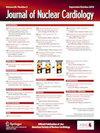转化分子成像:利用正电子发射断层扫描进行血栓形成成像
IF 3
4区 医学
Q2 CARDIAC & CARDIOVASCULAR SYSTEMS
引用次数: 0
摘要
心血管医学的重点是疾病的检测、治疗和预防,并朝着更加个性化和以患者为中心的治疗方向发展。为实现这一目标,需要采用新型成像方法,以便早期准确检测疾病并进行风险分层。目前,血栓性心血管疾病的诊断、监测和预后均基于测量结构解剖和生物功能变化的成像技术。分子成像技术正在成为无创检测血栓形成等生物过程的一种新工具,它可以超越目前的成像模式,提高对这些事件的识别能力。在这些不断发展的技术中,最前沿的是高灵敏度放射性racers 与正电子发射断层成像技术的结合使用,这种技术可以提高我们对血栓形成在一系列心血管疾病中的作用和起源的认识,从而彻底改变目前的诊断模式。本文章由计算机程序翻译,如有差异,请以英文原文为准。
Translational molecular imaging: Thrombosis imaging with positron emission tomography
A key focus of cardiovascular medicine is the detection, treatment, and prevention of disease, with a move towards more personalized and patient-centred treatments. To achieve this goal, novel imaging approaches that allow for early and accurate detection of disease and risk stratification are needed. At present, the diagnosis, monitoring, and prognostication of thrombotic cardiovascular diseases are based on imaging techniques that measure changes in structural anatomy and biological function. Molecular imaging is emerging as a new tool for the non-invasive detection of biological processes, such as thrombosis, that can improve identification of these events above and beyond current imaging modalities. At the forefront of these evolving techniques is the use of high-sensitivity radiotracers in conjunction with positron emission tomography imaging that could revolutionise current diagnostic paradigms by improving our understanding of the role and origin of thrombosis in a range of cardiovascular diseases.
求助全文
通过发布文献求助,成功后即可免费获取论文全文。
去求助
来源期刊
CiteScore
5.30
自引率
20.80%
发文量
249
审稿时长
4-8 weeks
期刊介绍:
Journal of Nuclear Cardiology is the only journal in the world devoted to this dynamic and growing subspecialty. Physicians and technologists value the Journal not only for its peer-reviewed articles, but also for its timely discussions about the current and future role of nuclear cardiology. Original articles address all aspects of nuclear cardiology, including interpretation, diagnosis, imaging equipment, and use of radiopharmaceuticals. As the official publication of the American Society of Nuclear Cardiology, the Journal also brings readers the latest information emerging from the Society''s task forces and publishes guidelines and position papers as they are adopted.

 求助内容:
求助内容: 应助结果提醒方式:
应助结果提醒方式:


